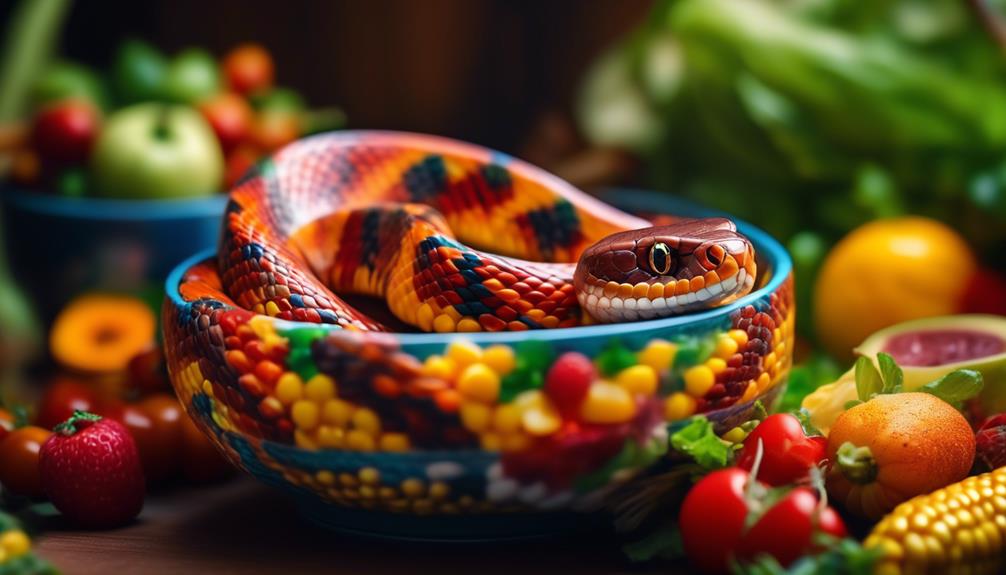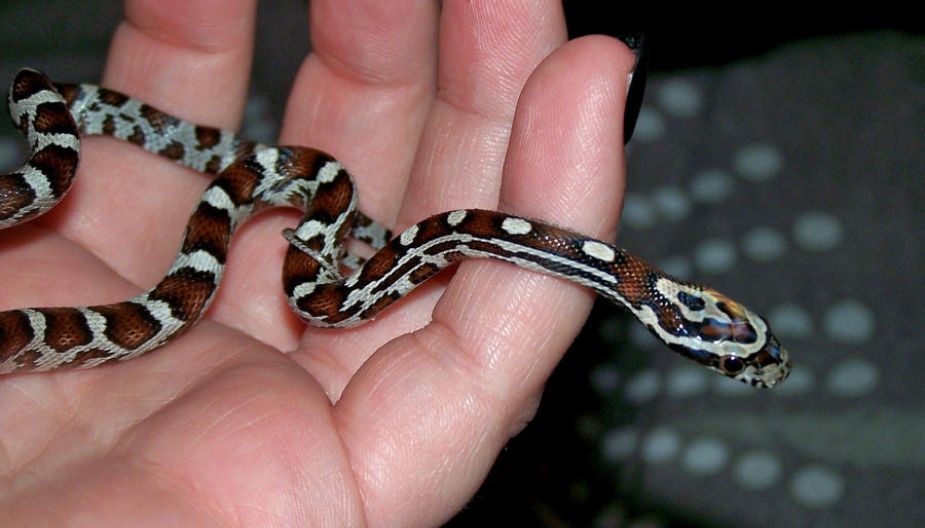When it comes to keeping your corn snake happy and healthy, the right diet is essential. You might think it's simple – just feed them mice, right? Well, not quite.
In this discussion, we'll explore the best foods for your corn snake, from nutrient-rich prey items to the debate between live and frozen prey. But there's more to it than just what you're feeding them – it's also about when and how often you're doing it.
So, let's dive in and make sure your corn snake is getting the best possible nutrition.
Nutrient-Rich Prey Items
When selecting nutrient-rich prey items for your corn snake, prioritize options such as mice, rats, and chicks for optimal dietary balance and health. These prey items offer a significant source of essential nutrients such as protein, calcium, and other vitamins and minerals.
In addition to these options, insect choices like appropriately sized crickets and mealworms can also provide nutritional value to your snake's diet. It's essential to consider the prey size in relation to your snake's feeding behavior. For instance, offering prey items that are too large may lead to regurgitation, while prey items that are too small may not provide adequate nutrition.
Understanding your corn snake's individual feeding behavior and adjusting prey size accordingly can help maintain its health and well-being.
Variety of Rodents
Opt for a diverse selection of rodents to provide a well-rounded and balanced diet for your corn snake, ensuring a range of essential nutrients for its optimal health.
- Rodent Size
- Vary the size of rodents you offer to accommodate your snake's changing dietary needs as it grows. Start with pinkie mice for hatchlings, then progress to fuzzies, hoppers, and finally adult mice or small rats for adult corn snakes. Avoid offering prey that's too large for your snake, as this can lead to regurgitation or injury. Conversely, prey that's too small may not provide adequate nutrition.
- Breeding Rodents
- Consider breeding your own rodents to ensure a sustainable and cost-effective supply of feeder animals. This also allows you to control the quality of the rodents' diet, which directly impacts the nutritional value they offer to your snake. When breeding rodents, prioritize their health and nutrition to produce high-quality feeders. Feed them a balanced diet and provide proper living conditions to ensure they, in turn, provide essential nutrients to your corn snake.
Live Vs. Frozen Prey
To ensure a well-rounded and balanced diet for your corn snake, it's important to carefully consider the choice between live and frozen prey for feeding.
Ethical considerations play a significant role in this decision. While live prey might provide a more natural hunting experience for your snake, it also raises ethical concerns about the welfare of the prey animal. Frozen prey, on the other hand, eliminates the suffering of live prey and reduces the risk of injury to your snake during feeding.
Prey size is another important factor. Live prey can sometimes be challenging to find in the appropriate size for your snake, especially if it's a picky eater. In contrast, frozen prey is readily available in a variety of sizes, making it easier to ensure that your snake receives the right portion for its nutritional needs.
Cost comparison and prey availability are also crucial considerations. Live prey may be more expensive and less readily available than frozen prey, which can be conveniently stored until needed. Additionally, frozen prey often undergoes a process called 'gut loading,' where the prey is fed a nutritious diet before being frozen, ensuring that your snake receives essential nutrients when it consumes the prey.
Ultimately, carefully weighing these factors will help you make an informed decision that prioritizes the health and well-being of your corn snake.
Supplemental Feeding Options
Supplemental feeding options for corn snakes should be carefully selected to ensure the provision of essential nutrients and the maintenance of overall health. Understanding the feeding behaviors and dietary preferences of corn snakes is crucial for offering appropriate supplemental feeding options. Here are some options to consider:
- Variety of Prey: Corn snakes are known to consume a variety of prey in the wild, including rodents, birds, and eggs. Offering a diverse range of prey items, such as mice, chicks, and quail eggs, can help meet their nutritional needs and mimic their natural diet.
- Fortified Prey: Some keepers choose to provide commercially available fortified prey items. These prey items are enriched with essential nutrients, such as calcium and vitamins, to ensure that the snake receives a well-rounded diet.
- Gut-Loading Prey: When offering live prey, it's essential to gut-load them with nutritious foods before feeding them to the snake. This ensures that the snake receives the maximum nutritional benefit from its prey.
Understanding the specific feeding behaviors and dietary preferences of corn snakes is essential for providing appropriate supplemental feeding options that support their overall health and well-being.
Feeding Schedule and Frequency
When considering the feeding schedule and frequency for your corn snake, it's important to align their dietary needs with appropriate timing and intervals to ensure their nutritional requirements are met effectively. Feeding consistency is vital for the overall well-being of your corn snake.
Young corn snakes require more frequent feeding, typically every 5-7 days, while adult snakes can be fed every 7-10 days. It's essential to monitor your snake's body condition to adjust the feeding schedule accordingly. Snakes that are overweight or underweight may require a change in feeding frequency.
Additionally, offering a variety of prey items, such as mice and rats, can contribute to snack satisfaction and provide essential nutrients for your snake's health.
Furthermore, consider the season when determining the feeding schedule. During the winter months, corn snakes generally eat less or may go off feed altogether, while in the summer, they may have a more robust appetite.
Always ensure that the prey offered is proportionate to the snake's size, and avoid handling your snake before and after feeding to prevent stress and potential regurgitation.
Conclusion
So, now you know the best foods for a happy corn snake. With a diet consisting of nutrient-rich prey items, a variety of rodents, and the option of live or frozen prey, your corn snake will thrive.
Remember to supplement their diet as needed and establish a feeding schedule and frequency that works best for your individual snake.
Are you ready to provide the best nutrition for your corn snake and ensure their happiness and health?


